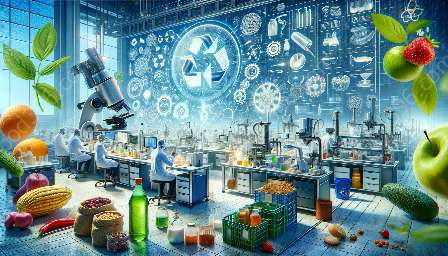Foodborne diseases are a significant public health concern, leading to illness and even death in severe cases. Understanding the causes, prevention, and treatment of these diseases is essential for safeguarding public health. In this comprehensive guide, we will explore the science of foodborne diseases, their prevention, and the intersection with food safety regulations, food science, and technology.
The Fundamentals of Foodborne Diseases
Foodborne illnesses are infections or irritations of the gastrointestinal (GI) tract caused by food or beverages that contain harmful bacteria, parasites, viruses, or chemicals. According to the Centers for Disease Control and Prevention (CDC), approximately 48 million people in the United States experience foodborne illnesses each year, leading to 128,000 hospitalizations and 3,000 deaths.
Common pathogens responsible for foodborne diseases include:
- Bacteria: Salmonella, Escherichia coli (E. coli), Listeria monocytogenes, Campylobacter, and Clostridium perfringens
- Parasites: Toxoplasma gondii, Cryptosporidium, and Giardia
- Viruses: Norovirus, Hepatitis A virus, and Rotavirus
- Chemicals: Toxins from molds, harmful metals, and pesticides
Causes of Foodborne Diseases
Food contamination, improper food handling, inadequate cooking, and poor hygiene are primary causes of foodborne diseases. Contaminated water, unpasteurized milk, raw or undercooked meat, and unwashed fruits and vegetables can harbor these pathogens and chemicals, increasing the risk of foodborne illnesses.
Prevention of Foodborne Diseases
Preventing foodborne diseases entails implementing robust food safety practices that adhere to regulations and incorporate advancements in food science and technology. The key strategies for preventing foodborne illnesses include:
- Adhering to Food Safety Regulations: As a foundational step, it is crucial for food businesses to comply with food safety regulations established by government agencies such as the Food and Drug Administration (FDA) and the U.S. Department of Agriculture (USDA). These regulations cover areas such as sanitation, handling, and transportation of food, as well as labeling and packaging requirements.
- Implementing Hazard Analysis and Critical Control Points (HACCP): HACCP is a systematic preventive approach to food safety that addresses physical, chemical, and biological hazards as a means of prevention rather than finished product inspection. It focuses on identifying potential hazards, implementing controls, and monitoring their effectiveness at critical points in the food production process.
- Training Food Handlers: Proper training of food handlers in hygienic practices, safe food handling, and awareness of potential hazards is essential in preventing the introduction and spread of pathogens in food products.
- Utilizing Food Science and Technology: Innovations in food science and technology play a crucial role in preventing foodborne diseases. From improved food processing and preservation techniques to the development of rapid detection methods for pathogens, advancements in these fields contribute to safer food products and practices.
- Food Preservation: Techniques such as pasteurization, canning, and refrigeration help eliminate or control microbial growth, thus extending the shelf life of food products and reducing the risk of foodborne illnesses.
- Microbiological Testing: Rapid advancements in microbiological testing methods allow for the early detection of pathogens, ensuring the safety of food products before they reach consumers.
- Improved Hygienic Design in Food Processing Equipment: The design and construction of food processing equipment utilizing hygienic principles help minimize the risk of contamination during production.
- Enhanced Packaging and Labeling: Advanced packaging technologies can improve the preservation of food and provide consumers with crucial information about the safety and handling of food products.
Role of Food Science and Technology in Prevention
Food science and technology intersect with the prevention of foodborne diseases in several ways:
Conclusion
Foodborne diseases pose a serious threat to public health, but through the collective efforts of regulatory bodies, food scientists, and technological advancements, significant strides have been made in preventing these illnesses. By adhering to food safety regulations, implementing robust preventive measures, and harnessing the innovations in food science and technology, we can work towards a future where foodborne diseases are minimized, ensuring safe and healthy food for all.

